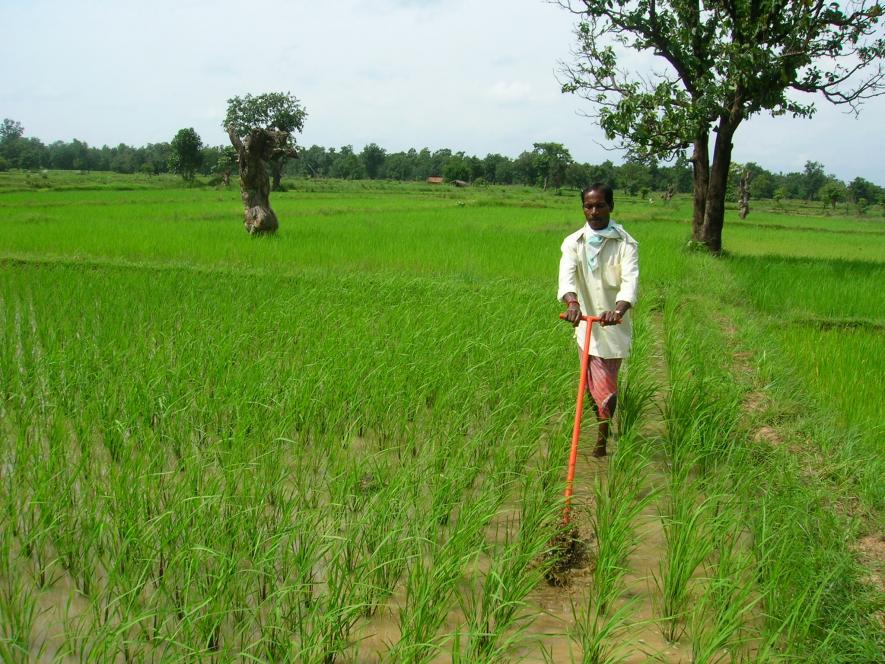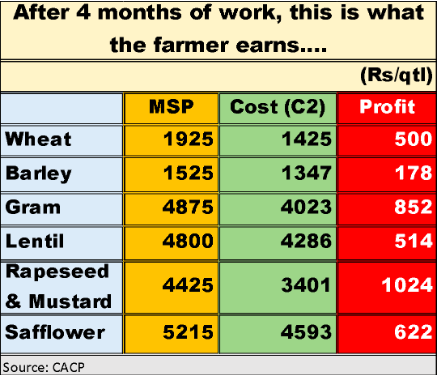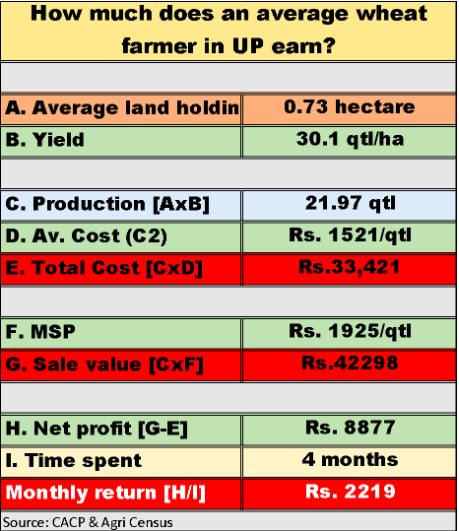Modi Govt Continues to Smother Farmers with Meagre MSPs

The government recently announced the Minimum Support Prices (MSP) for six major rabi (winter) crops – wheat, barley, gram, lentil, rapeseed & mustard, and safflower. Earlier this year, in July, it had announced MSPs for 14 major kharif (monsoon) crops including paddy, three coarse grains, three pulses, five oilseeds and cotton.
Both announcements fell far short of the desperately needed levels that farmers have been demanding for years, which is at least 1.5 times the total cost of production. But, typically, the Narendra Modi government continues to sustain the hoax of meeting this demand by using a much lower level for the cost of cultivation, and then pretending that it is giving so much more than that.
For the kharif MSP announcement, the government compared the MSP with the cost of production which is known as A2+FL. This means that it is a sum of all input costs and imputed costs of family labour. It excludes fixed costs, rental value of land and interest on fixed capital. Once these are added, the real cost emerges, known as C2.
In the recent rabi MSP announcement, the government has continued this practice and proudly claimed that new MSPs are double the cost of production, by which they mean the limited A2+FL.
How Much Will the Farmer Earn?
The table below shows how much farmers will earn, on an average, ignoring regional variations for the moment. The total cost calculations are taken from the government’s Commission for Agricultural Costs & Prices (CACP). A wheat farmer, for example, will earn Rs.500 for every quintal (100 kg) wheat harvested. Similarly, for other crops.

In case you are wondering that this is not too bad – Rs 5 per kg profit for wheat – think again. Because wheat crop takes about four months on an average to cultivate. That’s four months of intensive labour by the farmer and his/her family, watering the crop, applying fertilisers and pesticides, weeding and generally caring for it. In the end, the farmer is getting Rs.500 per quintal. Or, about Rs.125 per month, for the four-month duration.
Illustrative Case – Wheat Farmer of UP
Let’s take an illustrative case of a wheat farmer in Uttar Pradesh (UP) which, incidentally, produces over 31% of India’s wheat. Average land holding size in the state is 0.73 hectares, according to the last Agricultural Census of 2015-16. Average yield or productivity of wheat is about 30 quintals per hectare, lower than in an advanced state like Punjab (over 40).

As can be seen in the table above, the farmer will produce about 22 quintals of wheat on his/her land holding. Comprehensive cost of cultivation (C2) is estimated at Rs.1,521 per quintal by the CACP, so the farmer will spend about Rs.33,421 on his crop from sowing till harvesting.
Now comes the rub. If he/she sells it at the government fixed MSP, the total value that accrues to him/her is Rs.42,298. That leaves a net profit of just Rs.8,877 for the family’s four months of labour. Put another way, the family earnings are about Rs.2,219 per month for the four-month crop cycle.
Is this enough? Is it justified and reasonable? The Prime Minister never tires of mentioning that he has seen poverty, since he sold tea at a railway station. Can he imagine what this farmers’ poverty is like? And if he can, then what’s stopping him from giving better prices to farmers put an end to his/her misery?
Get the latest reports & analysis with people's perspective on Protests, movements & deep analytical videos, discussions of the current affairs in your Telegram app. Subscribe to NewsClick's Telegram channel & get Real-Time updates on stories, as they get published on our website.























